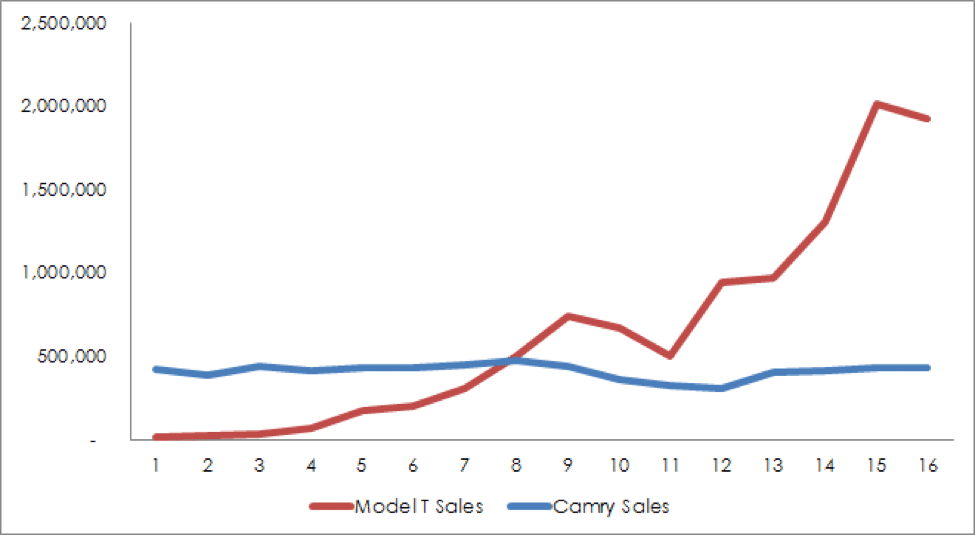Photo Source: Pamhule via Visual Hunt
Over the past few weeks, I have written several blogs about the development industry and have proposed some ways to think differently about creating prosperity in poor countries. This post is a bit different. In this post, I do a deep dive into innovation and explain why it is critical for development to occur.
The importance of innovation
In 1957 the Nobel Prize winning economist, Robert Solow, helped us better understand the impact of innovation on economic growth. His landmark paper, “Technical Change and the Aggregate Product Function,” is still cited till this day. In it, Solow explains that innovation, or technical change as he describes it, is responsible for 87.5 percent of the gross output per man hour while 12.5 percent is attributable to capital. Before economists considered the impact of innovation, labor and capital were the only variables they used to estimate economic growth. But not all innovation is created equally. In our work, we categorize innovation into four buckets, each having a different impact on economic development. All types of innovation matter, but some are more important for economic development than others.
The four types of innovations are potential innovation, market-creating innovation, sustaining innovation, and efficiency innovation. I will use the example of the automobile industry to illustrate these examples.
Potential innovation
Potential innovations target a Job to Be Done for which no product has been developed. Consider the Job, “allow me to travel to places beyond which my two feet would find it difficult or impossible to reach.” In 1886, Karl Benz invented the Motorwagen, and all of a sudden, the potential to travel far became more of a reality. But potential innovations, at their onset, are typically limited to the wealthiest and most skilled in society. Cars of the late 19th and early 20th century, for instance, were limited to wealthy individuals who could get them custom made. Additionally, they were not so easy to drive—one of the first cars had no brakes and had only one gear.
Even though only the wealthy in society are able to afford them, potential innovations open up a world of possibilities for innovators and entrepreneurs. They expose us to a new world we never thought existed. For instance, along with the first car came the prospect of not having horse manure all over cities (horse carriages were the most dominant form of transportation). But unless potential innovations graduate to market-creating innovations, the benefits to society and economic development will remain marginal at best.
Market-creating innovation
Market creating innovations target nonconsumers—the segment of the population who would benefit by owning or using a product but cannot due to the product’s cost, time, or the the expertise needed to use it. These innovations transform complex and expensive products, like the Motorwagen, into simple and more affordable products, making them accessible to a wider segment of the population.
A perfect example of a market-creating innovation is the Henry Ford’s Model T car. Henry Ford was able to manufacture a car that was inexpensive enough for an American with a modest income to purchase. He also made the car easier to drive so that owners would not have to hire a driver or need special expertise. Some of Ford’s innovations were the assembly line which reduced the Model T chassis assembly from 12.5 hours to 1.5 hours. Ford passed on the cost savings to the new class of consumers of automobiles such that by 1925 the price of his car had plummeted from $825 ($21,000 in 2015 dollars) to $260 ($3,500 in 2015 dollars).
Because market-creating innovations target nonconsumers which are typically the majority in poorer societies, innovators must hire many people to make, distribute, sell, and service their product. As such, from a job creation standpoint, it is net positive. Also, these innovations make society as a whole significantly more productive. But perhaps of more importance is their impact on economic and societal development. Before the democratization of automobiles, the concept of long-distance travel, living in suburbs, going out to restaurants near or far, gas stations, gasoline taxes (which helped build many of the United States’ roads) were far-reaching.
Market-creating innovations are critical for national development of any society, but once an entrepreneur begins the journey of innovation, she must continue to improve the product so as to remain vibrant and relevant. And that is where sustaining innovations play a role.
Sustaining innovation
Sustaining innovations target demanding, high-end customers with better performance than what was previously available. These innovations are designed for existing consumers and typically do not expand the market for a particular product. They are also a very critical component in the economic engine and are necessary for companies and countries to remain competitive. But because they target existing consumption, their impact on job growth tends to be marginal. These innovations have a substitutive effect on production and consumption. In other words, when companies produce newer and better products, they stop producing and selling older versions. As such, they can repurpose the capital and labor used to produce previous versions for the production of the new versions.
Take the Toyota Camry, the best-selling passenger car in the United States since 1997, for example. Sales of the Camry have only grown at a compound annual growth rate of less than 0.1% since 2000. In the United States Toyota sold 422,961 units of its Camry model in the year 2000 and 429,355 units in 2015, averaging sales of 407,393 units annually. While the innovations Toyota made in its Camry from 2000 to 2014 has kept the company competitive, vibrant, and relevant, these innovations have a relatively marginal impact on Toyota’s and the economy’s growth as compared to market-creating innovations.
Figure 1. Toyota Camry Unit Sales (2000 to 2015) versus Ford Model T Unit Sales (1909 to 1924)
Efficiency innovation
Efficiency innovations, as the name implies, enable companies to do more with less resources. These innovations allow companies to squeeze as much as possible from existing or newly acquired company resources. Efficiency innovations free up capital but are notorious for eliminating jobs when they are not targeted at nonconsumers.
Efficiency innovations come in all shapes and sizes, from outsourcing company operations to lower cost regions and eliminating jobs to leveraging technology that improves efficiency. But at the core of efficiency innovation is a company’s focus on freeing up capital and doing more with less. This is different from market-creating innovation because the focus on market-creating innovation is making products and services more affordable for nonconsumers.
As this US News and World Report article notes, Ford Motor Co. is building a $1.6 billion plant in Mexico where it will manufacture smaller cars. It is shifting production from the United States to Mexico in order to take advantage of cost savings that would arise. If those cost savings were targeted at nonconsumers so that those who historically could not afford cars now could, then it would have the potential to be a market-creating innovation. However, these cost savings are not likely to be passed onto future customers.
It’s tempting to think that one innovation is better than another. Unfortunately, that is not the case. All innovations are important and if companies don’t manage their portfolio of innovations, they are likely to get disrupted. And more importantly, if economies don’t have companies engaging in all these innovations, in one form or another, the economies are likely to stagnate and not create enough jobs for their citizens.
Our research suggests that for poor countries to begin their march towards sustainable economic development, they must prioritize market-creating innovations above all the others. As they make existing products less expensive for people in their countries, they will create jobs and make society more productive. This in turn will create room for more innovations.




